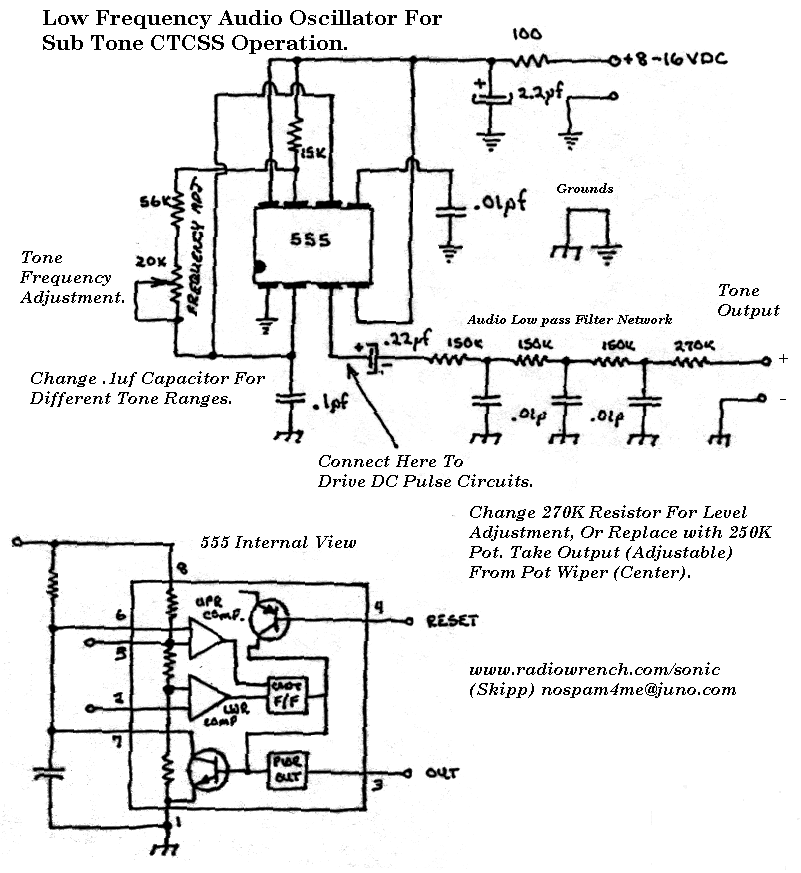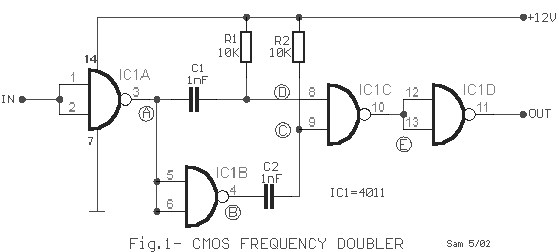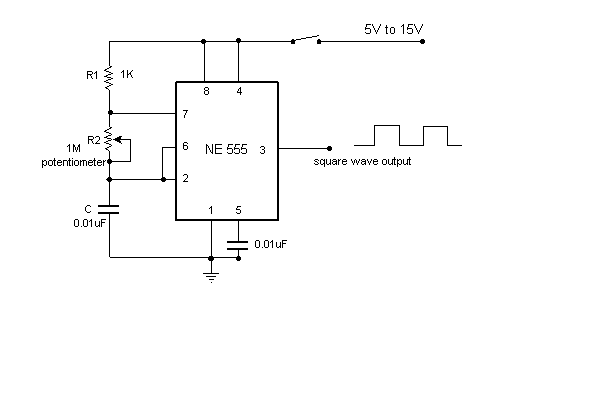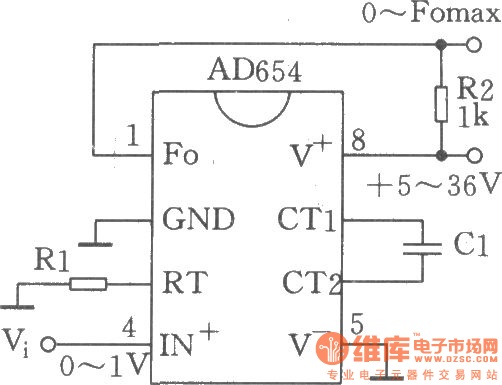
2-MHz Frequency Standard With Dividers
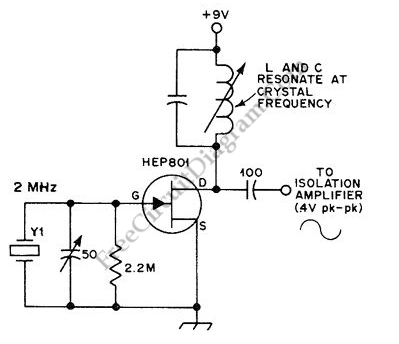
This is an oscillator circuit designed for calibrating frequency counters, amateur receivers, and frequency meters. It is referred to as the 2MHz standard with dividers circuit. The circuit utilizes two crystals, one at 100kHz and another at 2MHz. The schematic diagram illustrates the oscillator section of the circuit. Additionally, this circuit can be combined with a 7490 decade counter, which is driven by the crystals through an isolation amplifier. The circuit also divides the frequencies by factors of 100, 20, 10, 4, and 2 for each oscillator. All frequencies are usable and rich in harmonics up to 144MHz. For all modes of operation, the ground at pin 1 must be connected to the common terminal. The counter reset gates are located at pins 7, 6, 3, and 2.
The oscillator circuit described operates efficiently within the frequency range necessary for calibration purposes. The use of a 2MHz crystal oscillator provides a stable frequency source, while the 100kHz crystal serves as a secondary reference, allowing for versatile frequency division. The isolation amplifier plays a crucial role in ensuring that the output from the crystals does not affect the performance of the counter, maintaining signal integrity.
The 7490 decade counter is integral to this design, as it allows for the division of the oscillator frequencies into lower frequencies that can be utilized in various applications. The division ratios of 100, 20, 10, 4, and 2 enable a range of output frequencies that can be adjusted according to the needs of the user. This flexibility is particularly beneficial in calibration tasks, where different frequency references may be required.
The grounding of pin 1 to the common terminal is essential for the proper operation of the circuit, ensuring that all components share a common reference point, which minimizes noise and potential errors in frequency readings. The reset gates located at pins 7, 6, 3, and 2 allow for easy resetting of the counter, facilitating quick adjustments and ensuring accurate measurements.
Overall, this oscillator circuit is a valuable tool for electronics enthusiasts and professionals alike, providing a reliable means for frequency calibration across a variety of devices. The rich harmonic content up to 144MHz further enhances its utility, making it suitable for a wide range of applications in the field of electronics.This is an oscillator circuit that can be used for calibrating frequency counters, amateur receivers and frequency meters. This circuit is called 2MHz standard with dividers circuit. This circuit uses two crystals, 100kHz and 2 MHz. Here is the schematic diagram of the oscillator part of the circuit: This circuit is then can be combined with two
7490 decade counter, that is fed by the crystals through isolation amplifier. This circuit also divide the frequencies by 100, 20, 10, 4, and 2 for each oscillator. All frequencies is usable and rich in harmonics through 144MHz. For all mode of operation, the ground at pin 1 must be tied to common terminal. The counter reset gates at pins 7, 6, 3, and 2. We aim to transmit more information by carrying articles. Please send us an E-mail to wanghuali@hqew. net within 15 days if we are involved in the problems of article content, copyright or other problems. We will delete it soon. 🔗 External reference
The oscillator circuit described operates efficiently within the frequency range necessary for calibration purposes. The use of a 2MHz crystal oscillator provides a stable frequency source, while the 100kHz crystal serves as a secondary reference, allowing for versatile frequency division. The isolation amplifier plays a crucial role in ensuring that the output from the crystals does not affect the performance of the counter, maintaining signal integrity.
The 7490 decade counter is integral to this design, as it allows for the division of the oscillator frequencies into lower frequencies that can be utilized in various applications. The division ratios of 100, 20, 10, 4, and 2 enable a range of output frequencies that can be adjusted according to the needs of the user. This flexibility is particularly beneficial in calibration tasks, where different frequency references may be required.
The grounding of pin 1 to the common terminal is essential for the proper operation of the circuit, ensuring that all components share a common reference point, which minimizes noise and potential errors in frequency readings. The reset gates located at pins 7, 6, 3, and 2 allow for easy resetting of the counter, facilitating quick adjustments and ensuring accurate measurements.
Overall, this oscillator circuit is a valuable tool for electronics enthusiasts and professionals alike, providing a reliable means for frequency calibration across a variety of devices. The rich harmonic content up to 144MHz further enhances its utility, making it suitable for a wide range of applications in the field of electronics.This is an oscillator circuit that can be used for calibrating frequency counters, amateur receivers and frequency meters. This circuit is called 2MHz standard with dividers circuit. This circuit uses two crystals, 100kHz and 2 MHz. Here is the schematic diagram of the oscillator part of the circuit: This circuit is then can be combined with two
7490 decade counter, that is fed by the crystals through isolation amplifier. This circuit also divide the frequencies by 100, 20, 10, 4, and 2 for each oscillator. All frequencies is usable and rich in harmonics through 144MHz. For all mode of operation, the ground at pin 1 must be tied to common terminal. The counter reset gates at pins 7, 6, 3, and 2. We aim to transmit more information by carrying articles. Please send us an E-mail to wanghuali@hqew. net within 15 days if we are involved in the problems of article content, copyright or other problems. We will delete it soon. 🔗 External reference
